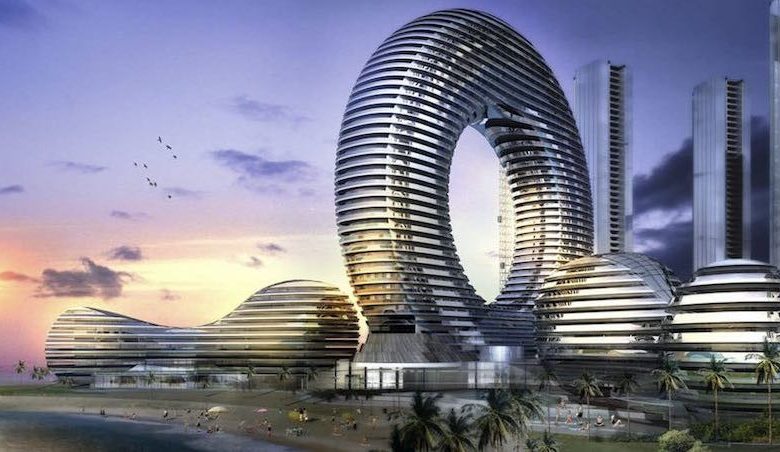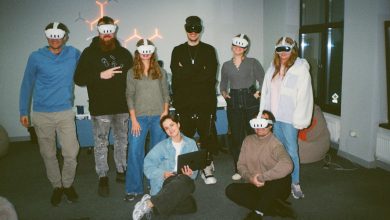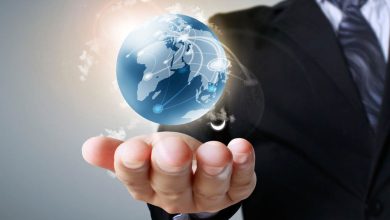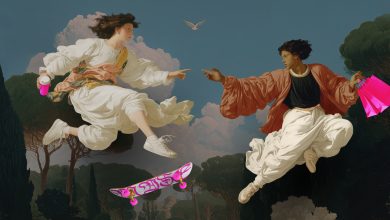
“Architecture is the learned game, correct and magnificent, of forms assembled in the light.” – Le Corbusier (1923)
A bridge back through time
What would Le Corbusier think of our cities, today?
Imagine for a moment that Le Corbusier could visit today’s London, Madrid, or New York. He might even stay in his home city of Paris. He could see everywhere, both that his vision had been proved right and that it had been proved wrong.
If his 1925 “Plan Voisin” had gone ahead, today’s Paris would look totally different.
The question is would it be a better Paris or worse?
Think about Le Corbusier’s ideas that were adopted on the outskirts of many cities, including Paris, but remember that he didn’t foresee what would happen to the people living in those areas.

Today, the same as in Le Corbusier’s time, new architectural concepts, such as the Smart City powered by Artificial Intelligence, self-driving cars, the Internet of Things (IoT), and the Blockchain, may seem similarly far ahead and mysterious.
At the same time as Le Corbusier, another school of design thought, Bauhaus, (founded by Walter Gropius, in 1919), was thriving in Germany and producing many remarkable architectural thinkers, such as Ludwig Mies van der Rohe.
The question they posed was how to reduce buildings to functional structures.
Le Corbusier’s famous saying, “A house is a machine for living in”, influenced the minds of many of these visionaries’ contemporaries.
However, it’s always hard to judge outcomes, because architects can only create such ‘machines’ with the technology currently available to them.
The usage of those ‘machines’ depends, though, on people and, many times, the actual usage of the architecture, is unpredictable.
The architect realises some ideas through visualising the future; however, every human imagination is limited.
Today, unlike Le Corbusier and his contemporaries, we have massive amounts of computing power available which allow us to model how the future world will look like.
We also can connect streams of data to predict future behaviour.
However … the same as those wonderful machines of the 1930s and grand visions of modernity from 1925, we still do not know all the variables. Just like they didn’t in 1930.

And now, ladies and gentlemen….
Welcome to the future world of 2038

Green silence
The first thing, which will likely surprise the visitor from 2020, is how silent this world is. Or rather, it sounds different.
What, twenty years ago, would have been bustling streets full of noisy vehicles, is now green and peaceful with various types of silent transport that move, differently.
Unlike in the past, where chaos and human error caused many collisions, crashes and dangerous situations, the world of 2038 is much safer.
Many cities have established car-free policies allowing only self-driving, remotely connected vehicles to enter.
Many historical cities have banned cars, vans, and motorcycles from the areas around historical landmarks.
Who needs a man in a white van when many things can be 3D printed directly in the city and agricultural produce can be transported by drones and self-driving smart vans from vertical, automated urban farms.
The cities are much greener because there is far less pollution from carbon-based fuels and the machines they once powered.

Like an anthill
When you are flying over the city of 2038, you soon notice, especially in those newly built or rebuilt urban areas, a different way of movement.
Unlike the chaotic traffic of the past, all the cities and urban zones – which opted for these changes – are characterised by the very smooth movement of traffic.
Looking down, it looks almost like a giant anthill, full of movement in every direction, but there is no start-stopping, no traffic jams.
Vehicles and pedestrians are separate because many such areas have elevated walkways above the traffic flowing below.
These elegant new walkways are full of trees and, often, even water features.
Their urban environment feels different because of this strong segregation of various types of traffic: drones, people, self-driving vehicles, underground highways, railways, and pipes.

Hyper materials
Similar to how the invention of steel changed cities in the past, enabling buildings to be built taller and bigger, new strong lightweight materials, using chemical printing manufacturing processes, are constructed, or better said, “grown” inside the cities of 2038.
A lot of this new advanced construction material is, locally, “grown” inside huge tubes that are connected to various computerised systems, all linked to huge autonomous networks.
Some emerging technologies emit holographic-like experiences completely replacing the need for some physical objects (think of the floating 3D ads in Blade Runner but appearing to be solid).
Hyper-morphism is another trend coming more and more into use, with new machines able to change the shape of created objects.

Kingdom of Light
At night, the cities of 2038 change into a highly immersive experience, that uses a combination of physical world objects (that often change shape) and virtual world emulation using computer-controlled lighting to emit a 3D experience.
This intelligent technology enables many people to be accompanied by highly realistic virtual friends.
More and more human companions are not human but incredibly complex simulations precisely tailored to meet individual wants, needs, and desires.
The experience with such simulations is so immersive – thanks to the computing power of the always-connected city – that a visitor from 2020 may experience strange situations when something visually real morphs into something else – or, simply, disappears, just like when you switch off a TV.

Constant threat of cyber attack
The newly created world of protected urban zones has created a growing number of enclaves that are inaccessible without biometric real-time identification.
Also, thanks to new hyper materials, many protective walls have started to be invisible and the defensive systems, guarding the entrances and exits of these urban enclaves, are no longer human beings but machines, on duty 24/7, with the ability to morph into human-like forms to better interact with people.
These changes further widen the gap between urban populations.
These protected cyber enclaves are increasingly surrounded by many miles of low-income neighbourhoods that have become a breeding ground for those against the fast-moving disintegration of cities as vast urban areas open to all.
This growing social instability fuels the growth of alternative information and communication systems to allow people to live ‘off-grid’.
Many hacktivists, cyber-terrorist groups, commercial hacking groups, and even hostile, competitive nation-states, increasingly try to break into these enclaves’ highly guarded systems.

High speed travel
With the increasing separation of such advanced urban enclaves from the rest of the world there is a need to solve the problem of how to provide secure rapid transportation.
The transport revolution of the last twenty years has brought many previously unimaginable forms of transport, achieving speeds far beyond the imagination of people in 2020.
Just like everything else in this hyper-connected world of 2038, super-fast transport systems are one of the primary attack targets, right after identity theft and the use of illicit morphing systems to clone a digital copy of a specific human.
That’s why these hyper-speed areas transportation hubs are located far from the urban enclaves and people, travelling to and from them, are transported by specially designed secure capsules that provide electronic check-in, identity verification, and passenger and luggage security.

Self governing cities
In these autonomous enclaves, the ‘city’ is now omnipresent.
The rules on how to behave and what is acceptable in each area are delivered in real-time.
Everything, machines of all kinds, humans, infrastructures, and even animals and organic materials, are connected 24/7.
It’s the new world where machines deliver commands and rules to humans but are not people’s overlords.
These cities are now much stronger because cybersecurity risks are automatically and instantly disabled to protect the citizens of these nation-states.
The reason for all this is the skyrocketing costs from high-profile hacks and attacks, causing major disruptions to countries and cities.
These constantly escalating financial and personal costs became unbearable for citizen taxpayers and led to the formation of self-governing cities and enclaves running collective investment schemes that use artificial intelligence governance models that prevent human city officials and administrators from making errors of judgment.
These highly sophisticated real-time systems are under constant threat from ever-evolving cyber warfare as cyber terror groups repeatedly try to break into these governance machines which advise on, and decide, the rules to protect from every new attack.

Long life
With continuing advances in ‘cyber health’, many humans have started to enhance their bodies, senses, and cognitive abilities with artificial intelligence implants.
This has resulted in many humans, instead of dying (as they previously would have), being “upgraded” using the latest technologies.
These life-extending technologies are, however, extremely expensive and widen the division between the populations within the city-states and enclaves and those beyond.
There are also growing attempts to begin colonising other planets with new research showing that the materials encountered there may further modify human capabilities.
One of the major issues of this world is also the development of new area defensive and automated self-defence systems.
These autonomous learning systems, human-machine collaborative decision-making, assisted human operations, advanced manned-unmanned systems operations, networked autonomous weapons, and high-speed projectiles, were all already being worked on in 2018. (“The Economist”, p11, 27.01.2018).
Such constantly evolving protective systems are designed to defend enclaves and humans but, the same as everything connected, are prone to cyber-attacks and, if hijacked by cyber terrorists, the mayhem that they can cause is very high.

Conclusion
The same as Le Corbusier, in 1925, I do not know which of my predictions will become reality and how quickly.
Despite, what many of you may sound futuristic and, maybe, even outright crazy, I would like to remind you that the world of just twenty years ago, in 2000, looked very different from today.
Then, there were many things not even imaginable which, today, we take for granted as “standard”.
Also, some of you will, after reading this article, want to tell me that it’s too dark and the future reality will not be like this.
So let me remind you of a couple of facts.
The first is a simple exercise: go back in time to 2000 and imagine, with what was known at that time, things like ransomware attacks that will demand payment in a virtual currency that didn’t even then exist as a concept to unfreeze your important digital data.
The same would be true for Le Corbusier in 1925 trying to imagine the world in 1945… he, very probably, had a different vision of the near future.
We never know where we are, now, in the timeline of history. The same as, for example, on the morning of 9.11.2001 – which looked like that of any other normal day, until … history set into motion.




